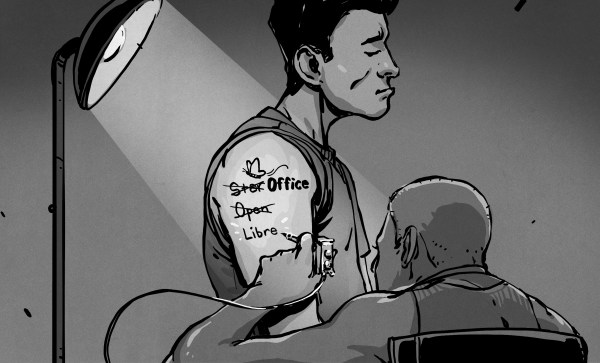We start this week with a good write-up by [Eugene Lim] on getting started on vulnerability hunting, and news of a problem in OpenOffice’s handling of DBase files. [Lim] decided to concentrate on a file format, and picked the venerable dbase format, .dbf. This database format was eventually used all over the place, and is still supported in Microsoft Office, Libreoffice, and OpenOffice. He put together a fuzzing approach using Peach Fuzzer, and found a handful of possible vulnerabilities in the file format, by testing a very simple file viewer that supported the format. He managed to achieve code execution in dbfview, but that wasn’t enough.
Armed with a vulnerability in one application, [Lim] turned his attention to OpenOffice. He knew exactly what he was looking for, and found vulnerable code right away. A buffer is allocated based on the specified data type, but data is copied into this buffer with a different length, also specified in the dbase file. Simple buffer overflow. Turning this into an actual RCE exploit took a bit of doing, but is possible. The disclosure didn’t include a full PoC, but will likely be reverse engineered shortly.
Normally we’d wrap by telling you to go get the update, but OpenOffice doesn’t have a stable release with this fix in it. There is a release candidate that does contain the fix, but every stable install of OpenOffice in the world is currently vulnerable to this RCE. The vulnerability report was sent way back on May 4th, over 90 days before full disclosure. And what about LibreOffice, the fork of OpenOffice? Surely it is also vulnerable? Nope. LibreOffice fixed this in routine code maintenance back in 2014. The truth of the matter is that when the two projects forked, the programmers who really understood the codebase went to LibreOffice, and OpenOffice has had a severe programmer shortage ever since. I’ve said it before: Use LibreOffice, OpenOffice is known to be unsafe. Continue reading “This Week In Security: OpenOffice Vulnerable, IOS Vulnerable, Outlook… You Get The Idea”














